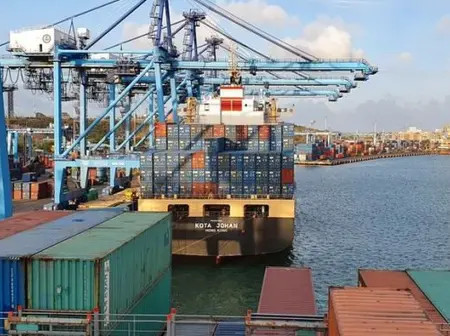Kenya’s current account deficit widened sharply in the second quarter of 2025, highlighting persistent external imbalances despite lower oil prices and a build-up in foreign reserves.
| Metric | Q2 2024 | Q2 2025 | Change % |
|---|---|---|---|
| Current Account Balance | -47.4 Bn | -83.7 Bn | ▼76.6% |
| Merchandise Trade Balance | -311.9 Bn | -348.4 Bn | ▼11.7% |
| Services Balance | 70.8 Bn | 65.5 Bn | ▼7.5% |
| Primary Income Balance | -52.4 Bn | -43.8 Bn | ▲16.4% |
| Secondary Income Balance | 227.0 Bn | 243.1 Bn | ▲7.1% |
| Financial Account Balance | 35.7 Bn | 136.5 Bn | ▲282.4% |
| Overall BoP | -2.6 Bn | 157.0 Bn | Surplus |
| Official Reserves | 1.096 Tn | 1.535 Tn | ▲40.0% |
Exports were hit by weaker re-exports of jet fuel to the Middle East and a collapse in titanium ore shipments to China. At the same time, imports rose in key categories such as machinery, iron and steel, and motor vehicles.
The fuel import bill eased 11.7% to KSh 139.8 billion, but this was not enough to offset broader import growth. Services posted a KSh 65.5 billion surplus, though lower than a year earlier.
The financial account recorded stronger net inflows of KSh 136.5 billion, supported by loan disbursements and higher portfolio inflows.
This helped push Kenya’s official reserves 40% higher to KSh 1.535 trillion. Overall, the balance of payments registered a surplus of KSh 157.0 billion.
Kenya’s external debt stock rose to KSh 5.685 trillion as of June 2025, up from KSh 5.405 trillion a year earlier. Multilateral lenders accounted for nearly 70% of loans, while international sovereign bonds increased to KSh 1.023 trillion, a 19.6% rise.
The composition of trade showed mixed signals. Coffee exports rose 69% in value, while horticulture and apparel recorded double-digit gains. On the other hand, cement, salt, and titanium fell sharply. Imports reflected growing domestic demand for capital goods, alongside weaker fertilizer and petroleum shipments.
The widening current account gap signals external vulnerabilities, even as reserves cushion the shilling. Policymakers face the challenge of sustaining export growth while containing import pressures in an environment of rising debt obligations.

Leave a Reply